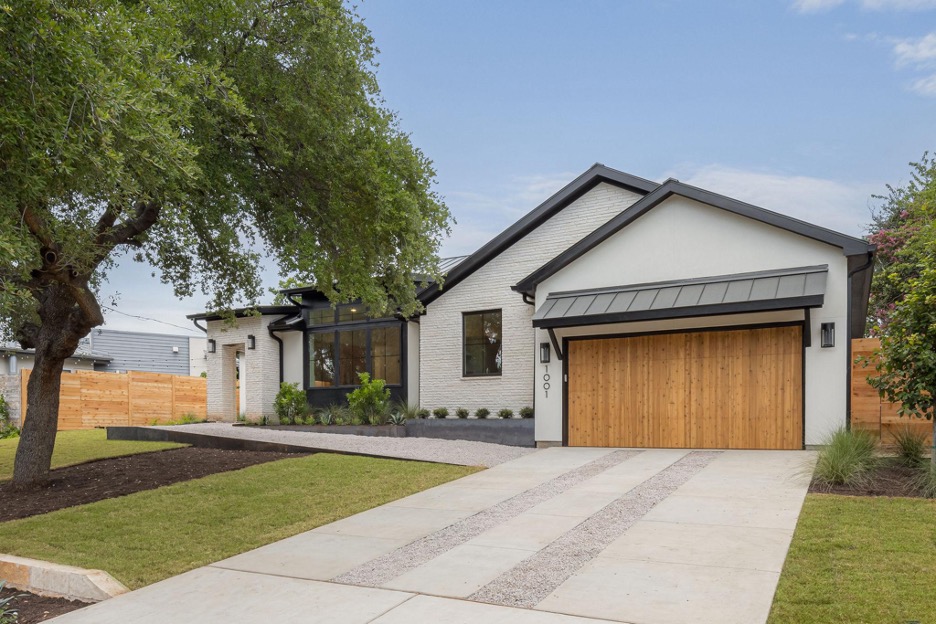
Copyright © 2025 Rivendale Homes


Ever notice there are a lot of single-car garages and carports in Austin? What's the deal with the gravel driveways? Believe it or not, those weren't just design choices—they're often requirements driven by Austin code due to something called impervious cover. If you're buying or building a home in Austin, understanding impervious cover could save you from expensive surprises and help you make smarter property decisions.
Impervious cover refers to any hard surface that prevents water from naturally soaking into the ground. This includes your home's roof, driveways, patios, sidewalks, pools, and even that detached garage or shed you're dreaming about. Essentially, if rainwater can't penetrate it and absorb into the soil, it counts as impervious cover.
Austin sits in the Texas Hill Country, where our unique geology and ecology make water management critical. Here's why the city regulates impervious cover so strictly:
Protecting Our Watersheds: Austin relies heavily on the Edwards Aquifer and local creeks for drinking water. When too much impervious cover exists in a watershed, rainwater runs off quickly instead of filtering naturally through the soil. This runoff picks up pollutants—oil, fertilizers, pet waste—and carries them directly into our water sources.
Preventing Flooding: We've all seen those dramatic photos of flooded Austin streets after heavy rains. Impervious surfaces dramatically increase stormwater runoff volume and speed, overwhelming drainage systems and causing flooding in areas that might otherwise handle the water naturally.
Preserving Natural Habitat: Our beloved Barton Springs and surrounding creeks aren't just recreational areas—they're critical habitats for endangered species like the Barton Springs salamander. Excessive impervious cover threatens these ecosystems by altering water temperature, chemistry, and flow patterns.
Most Austin properties have a maximum impervious cover limit, typically ranging from 40% to 60% of your lot, depending on your location and zoning. Here's what this means in practice:
When Buying a Home: That beautiful property might look perfect, but if the previous owner maxed out the impervious cover, you may not be able to add that dream workshop, expand the patio, or build a pool without removing existing structures. Always ask about remaining impervious cover capacity during due diligence.
When Building Custom: Your architect and builder need to carefully calculate every square foot. This is why you'll see those single-car garages, permeable gravel driveways, and creative use of pervious materials throughout Austin neighborhoods. It's not a style choice—it's often a necessity.
For Future Additions: Planning to add a mother-in-law suite or expand your kitchen? You'll need to account for the additional impervious cover. Sometimes homeowners must actually remove existing hardscape to make room for new construction.
Smart builders and homeowners have found ways to maximize their property's potential while staying within limits:
Permeable Materials: Gravel driveways, permeable pavers, and porous concrete allow water to filter through while providing functional surfaces. These don't count toward your impervious cover limit (or count at a reduced rate).
Rainwater Collection: Some homeowners install rainwater harvesting systems. In certain cases, the city may offer impervious cover credits for sophisticated collection systems that reduce runoff.
Carports vs. Garages: A carport with just a roof structure has a smaller impervious cover footprint than a fully enclosed garage, explaining their popularity in Austin.
Strategic Site Planning: Placing your home and hardscaping thoughtfully on your lot from the start prevents costly redesigns later.
Get the Impervious Cover Calculation: For existing homes, request documentation showing current impervious cover percentage and remaining capacity. For lots, understand the limit before designing your dream home.
Review Your Watershed: Properties in critical water quality zones or near creeks may have stricter regulations. The Austin Watershed Protection Department maintains maps showing these sensitive areas.
Factor It Into Your Budget: If you need to use permeable materials or remove existing structures to accommodate your plans, account for these costs upfront.
Work With Experienced Professionals: Austin-area architects, builders, and site planners like Rivendale Homes who regularly navigate these requirements can help you maximize your property's potential while staying compliant.

Impervious cover regulations might seem like a frustrating limitation at first, but they're protecting the natural resources that make Austin special. Understanding these rules before you buy or build prevents costly surprises and helps you make the most of your property investment.
Those quirky gravel driveways and compact garages? They're actually clever solutions that let homeowners maximize their living space while preserving the creeks, springs, and aquifers that define Austin's character. And once you understand the "why" behind the regulations, you might just appreciate the creativity they inspire.
Have questions about impervious cover on a property you're considering? Contact Rivendale Homes—we'd be happy to help you understand these codes and navigate the regulations to maximize your property's potential. Making informed decisions about impervious cover from the start can save you time, money, and headaches down the road.